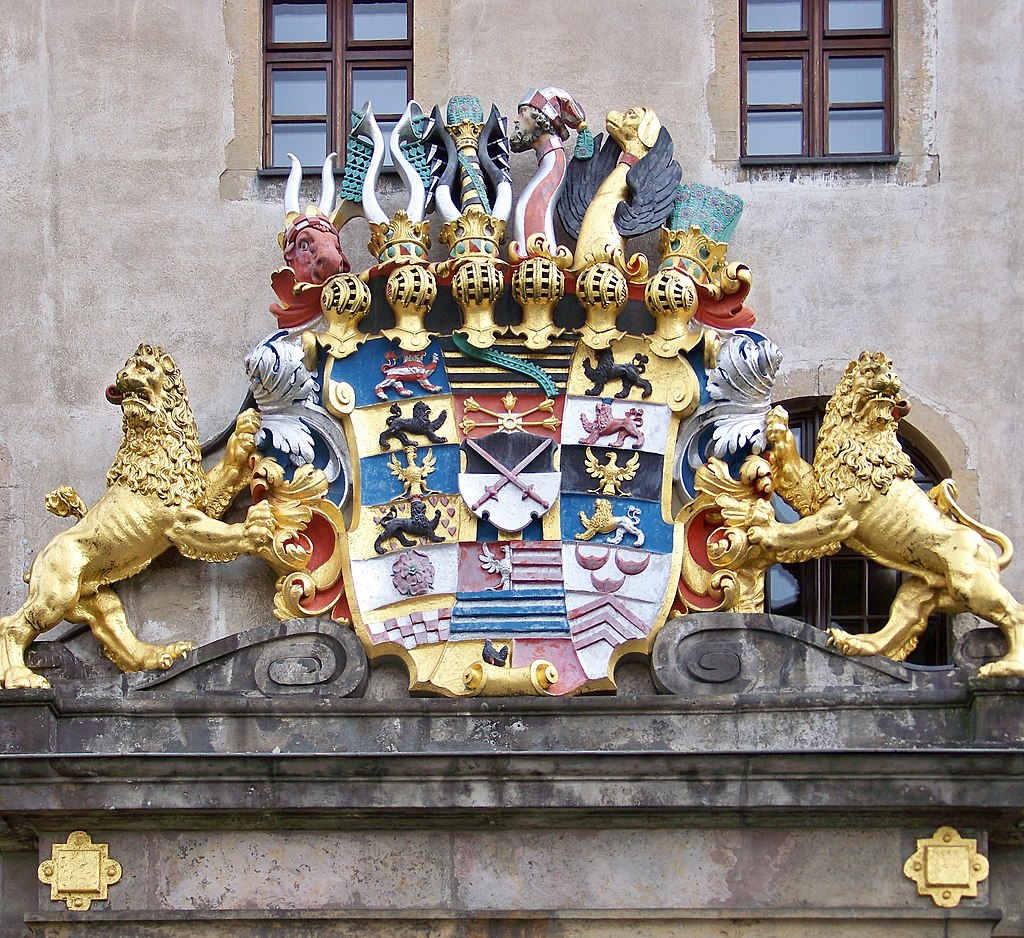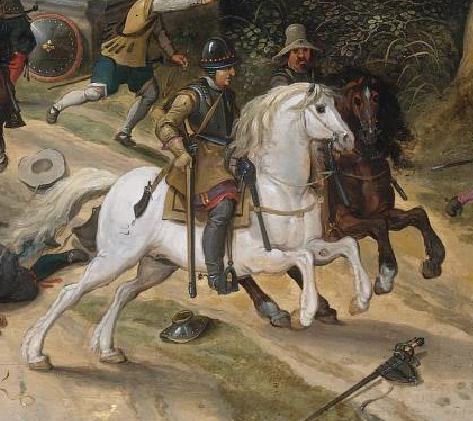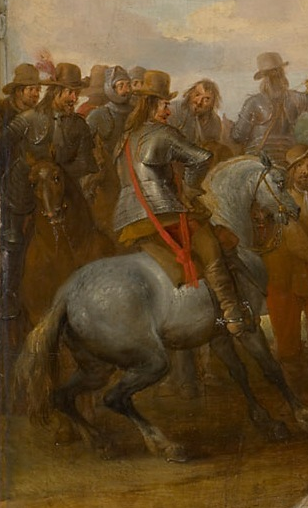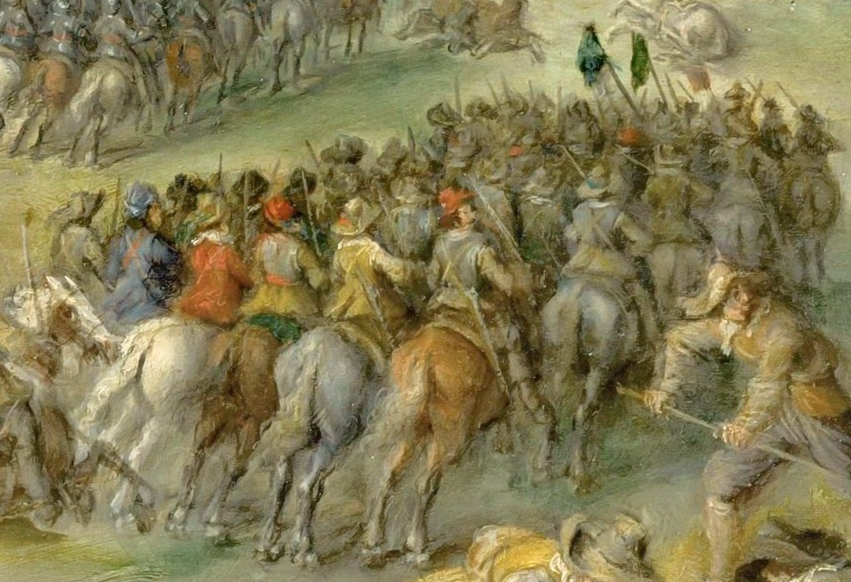Salvete Omnes,
10 days ago I posted about a Scottish pistols for Duke of Courland, one of them held at MET (NYC, USA)and that in 1616AD or so this pair of pistols was given by Duke Fredrich Ketler to Elector of Saxony, Johann Georg I (1585-1656) of the Wettin House.
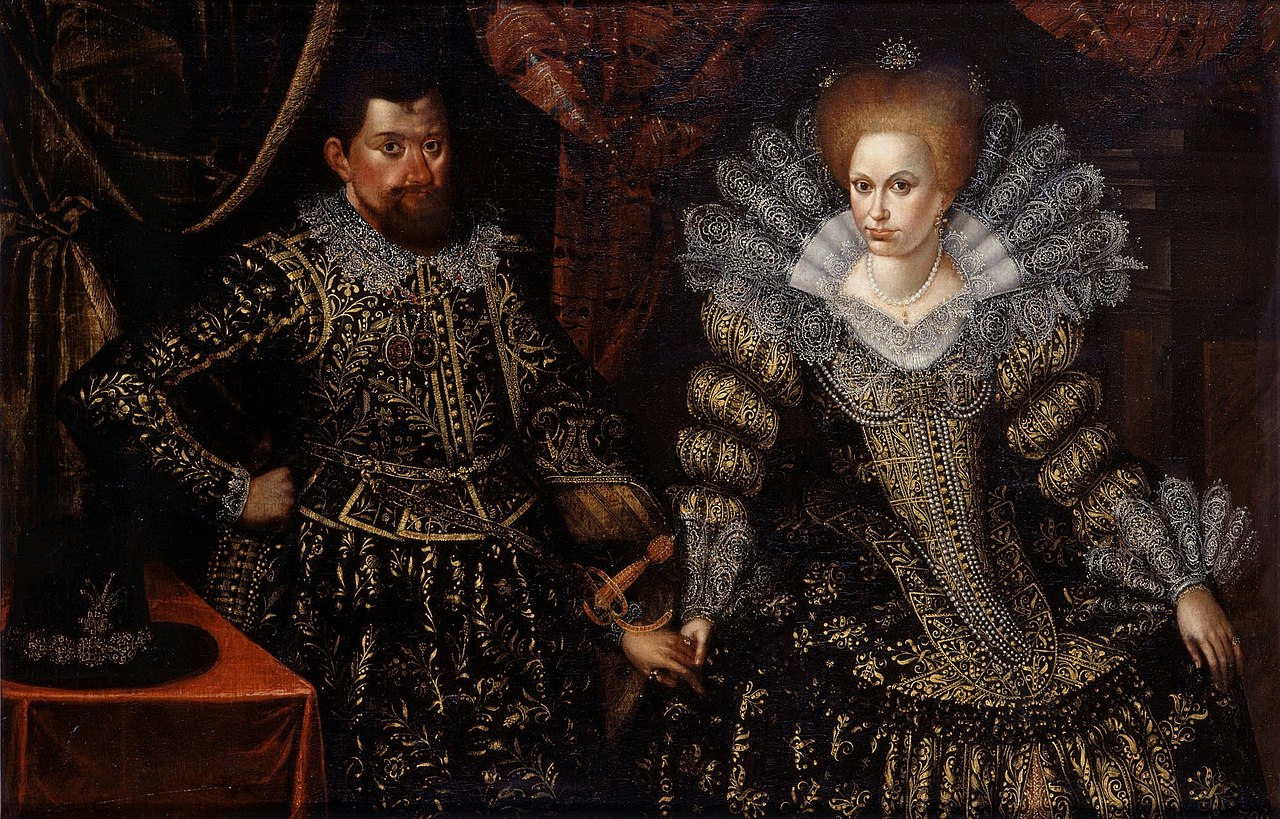 |
| Johann Georg I and His Wife Magdalene Sibylle |
During the reign of Johann Georg Dresden Schloss aka Dresden Castle (in Saxony, Fed.Republic of Germany) was the capitol of then quite powerful Saxony (Prussia and her wars on Saxony and Congress of Vienna 1815 reduced Saxony to a shadow of her former glory and importance within the Germanies - more than 270 German states & statelets prior to the Napoleonic Wars).
Johann Georg was reining during some of the most momentous and tragic periods of the European history, namely the Thirty Years
War(1618-1648).
We happily have some interesting iconography related to this prince and chivalry, his wars and reign etc.
 |
| our prince in the 30 Years War high fashion - buff coat. |
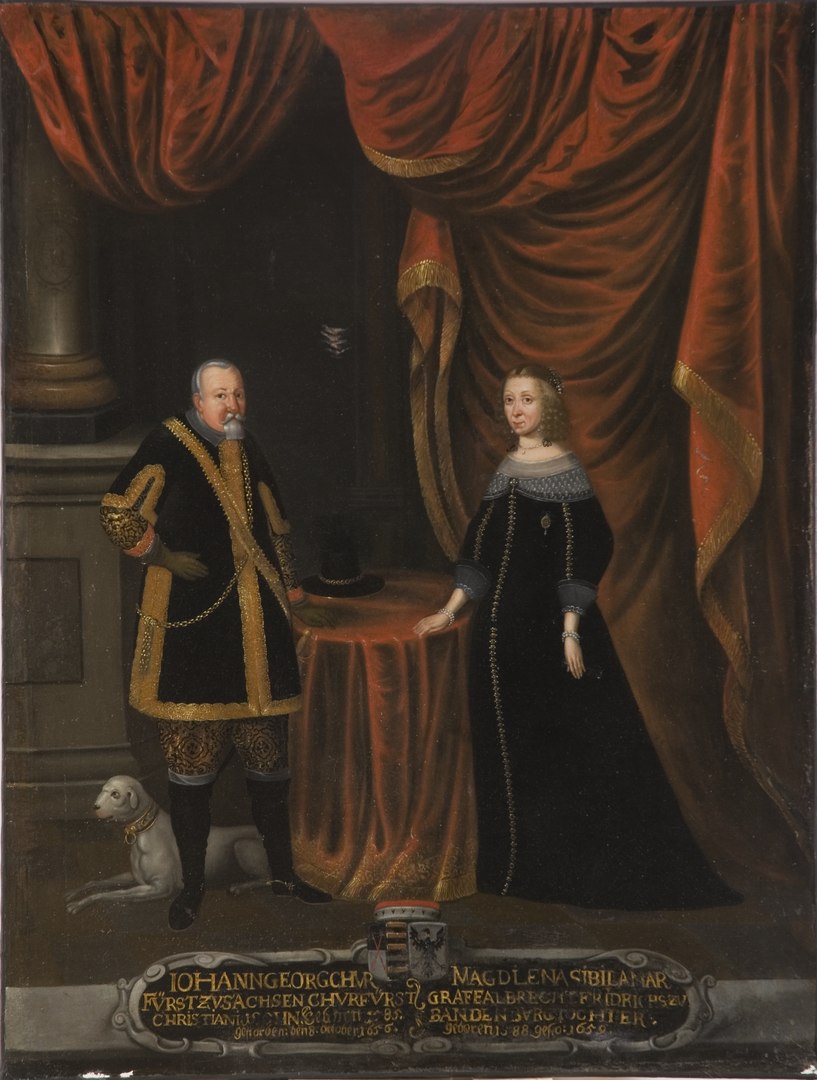 |
| Johann Georg I wearing a riding cassock alias casaque |
Back to his Courland connection - dr Mariusz Balcerek, mentioned in my previous post Polish researcher, wrote an article titled Murder in Jegalva [Mitau/Mitawa] in 1615 - published in 2008AD- can be read from his academia page.
From the article we learn that during the summer of 1615AD duke Wilhelm Ketler, who jointly ruled the duchy with his brother Friedrich, had his henchmen murder two noble opposition leaders - brothers Nolde. His brother duke Friedrich was somewhat implicated
Upon learning about this crime in Mitau our Polish suzerain, Sigismund III Vasa, and Polish Diet acted on this Courland high crime and misdemeanor. During the investigation undertaken in January -February 1616AD the royal commission concluded that duke Wilhelm was guilty of these crimes.
In May 1616AD Sejm aka Polish Parliament extinguished Wilhelm's claims to Courland's throne. ruled to have duke Wilhelm deposed, banned from the duchy of Courland. In June our Sejm ruled that since then only duke Friedrich Ketler would remain the ruler of the duchy of Courland. Wilhelm went to live and eventually die in Kukulow (Kucklow), town belonging in the realm of West Pomeranian duke Boguslaw XIV.
During the period of late summer 1615 and early spring 1616 duke Wilhelm and his brother Friedrich wanted to preserve the status quo of their duchy as its joint rulers, and even started hiring soldiers and shouldering support of various lords (like prince Lew Sapieha) and kings of Europe, hence James I of Scotland and England, and Gustavus Adolphus of Sweden, and Johann Georg I of Saxony. Perhaps - says dr Balcerek in a private exchange - the Scottish pair of pistols was part of a larger gift presented by the Kelter brothers to prince elector Johann Georg to ask him to intervene on their behalf at the Polish court.
Pistols stayed in Dresden but Wilhelm had to be gone from Courland for ever.
Fortuna audaces juvat.
Valete


